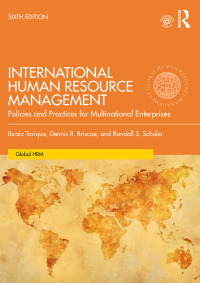Capgemini, founded in 1967 and headquartered in Paris, France, is one of Europes largest IT software and
Question:
Capgemini, founded in 1967 and headquartered in Paris, France, is one of Europe’s largest IT software and services groups. The firm has taken all available means (organic growth, acquisitions, and alliances) to become Europe’s leading company in computer services and consulting and, as of 2021, is among the top five of the world’s IT management and services consultancies. Its almost 270,000 people work in over 50 countries. For example, in 2000, Capgemini acquired Ernst & Young Consulting and in 2002, they spun off their Sogeti Group as a wholly owned subsidiary specializing in IT consulting and outsourcing, which now operates in over 100 locations worldwide. Capgemini has another division called Capgemini Engineering which was formed by acquiring Altran in 2020 and has over 52,000 engineers and scientists in over 30 countries.
The original merger of Cap, a computer services group, and Sogeti, a business management and information processing company, brought together operations in the UK, the Netherlands, Switzerland, and Germany, with a head office in France. Further acquisitions brought in a large number of small groups through- out Europe and the US. This expanded its coverage to IT consulting, customized software, outsourcing services, and education and training. In recent years, this strategy has expanded Capgemini’s work to countries such as India, the Czech Republic, and Sweden, with major partnerships with major software firms such as SAP and Microsoft. Moreover, they now have operations in Asia-Pacific (including Australia and China), and Latin America. In 2013, sales increased by 12 percent in Asia-Pacific and Latin America. Similarly, revenue increased by 16 percent in Australia. Global expansion is important to Capgemini.
Capgemini has always been highly decentralized, but its internal strategy has been that when any of its branches reached 150 personnel, the branch is split in two. This gives the firm greater flexibility in responding to variations in local demand. Decision-making and direct customer service are facilitated with smaller teams. Capgemini has developed information pooling systems to ensure that innovative solutions developed in one country or business will be rapidly disseminated to other countries and businesses. These include electronic bulletin boards and extensive electronic and voicemail facilities, plus the organizational culture of informal networks of professionals who work frequently together in project teams.
The challenges for this fast-growing transnational have major HR components, e.g., integrating its wide variety of organizations into a group with a common culture capable of working within a complex web of ownership relationships, while benefiting from the strengths of the relationships that exist among its “family” of committed, semi-autonomous professionals. Internally, Capgemini and its IHR team work to clarify and coordinate roles, objectives, systems, and resources, particularly its skilled professional staff, across countries and markets. For example, its Genesis project took two years to achieve this integration, but now Capgemini sees itself as coming much closer to achieving its aim to be a modern transnational enterprise.
Case study questions
1. What makes a firm a “transnational enterprise”?
2. Does Capgemini meet the criteria for being a transnational? Why or why not?
3. What are the HR implications of being a transnational? What makes HRM in
a transnational different from HRM in, for instance, a multidomestic firm?
4. What kinds of problems do you see in Capgemini’s strategy for structuring its
business?
Step by Step Answer:

International Human Resource Management Policies And Practices For Multinational Enterprises
ISBN: 9781138489493,9780429806124
6th Edition
Authors: Ibraiz Tarique , Dennis R. Briscoe , Randall S. Schuler





